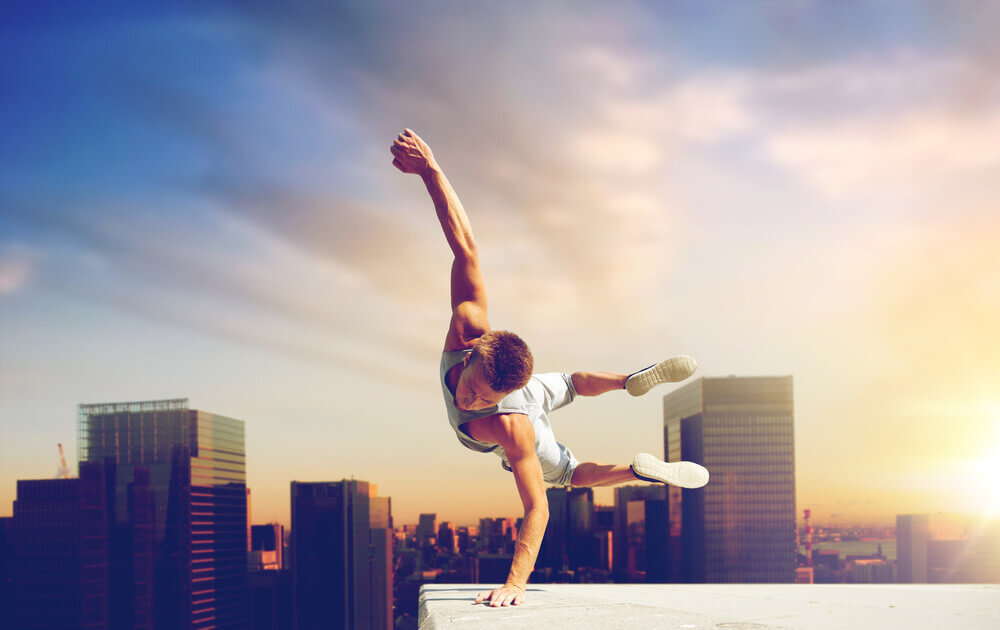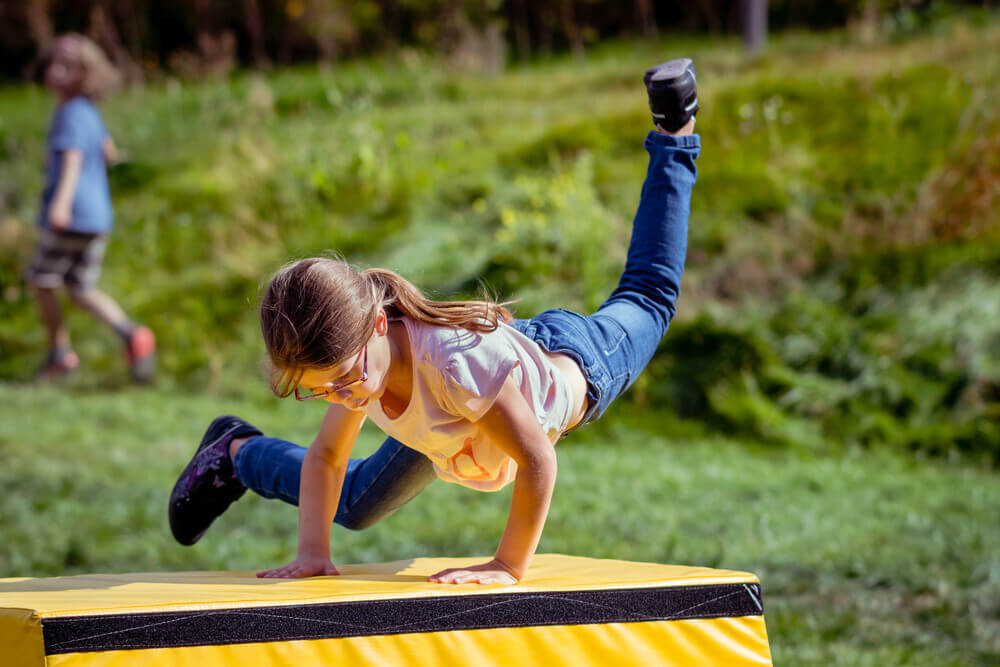Parkour is a dynamic and exciting physical discipline emphasizing agility, speed, and efficient movement. Often described as a blend of athleticism and artistry, Parkour involves navigating obstacles fluidly and creatively. It has gained popularity across various demographics, from celebrities and athletes to fitness enthusiasts. This article aims to provide a comprehensive introduction to Parkour, exploring its origins, fundamental techniques, and the benefits of incorporating it into a fitness regimen.
What Is Parkour?
Parkour can be defined as a performance art that focuses on improvising and optimizing everyday movements. Originating from the French term “Parcours,” meaning “course” or “path,” David Belle popularized Parkour in the early 2000s. The discipline involves a range of movements, including running, jumping, climbing, and balancing, all executed with fluidity and efficiency.
Participants in Parkour come from diverse backgrounds, and the practice is accessible to people of all ages and skill levels. It encompasses various styles and approaches, including military-inspired techniques, gymnastic movements, and freestyle tricks. The sport encourages individuals to use their environment creatively, transforming urban landscapes into playgrounds for physical expression.
Key Features of Parkour
Basic Movements and Techniques
Parkour is built on basic movements refined through repetition and practice. These movements include:
- Vaults: Techniques for overcoming obstacles such as walls or railings by using the hands for support while propelling the body over.
- Rolls: Methods for safely absorbing impact and transitioning from a fall or jump into a controlled roll to reduce the risk of injury.
- Precision Jumps are Leaps that require precise control and landing accuracy to navigate gaps or obstacles.
Equipment and Training
While Parkour emphasizes creatively using one’s body and surroundings, some equipment can enhance training. Common tools include:
- Ropes and Mats: Used for practicing techniques safely and improving grip strength.
- Jump suits: Special attire designed for comfort and protection during high-impact movements.
Training resources such as books and instructional videos can also be valuable. For instance, Andy Roberts’ “The Road to Gym” provides an in-depth look at Parkour techniques. At the same time, David Bennett’s “Parkour Fitness Manual” offers comprehensive guidance on integrating Parkour into fitness routines.
Benefits of Parkour Training
Parkour training offers numerous physical and mental benefits, making it a compelling choice for fitness enthusiasts. Some key advantages include:
Improved Cardiovascular Health
The dynamic nature of Parkour workouts, which often involve high-intensity interval training, can significantly enhance cardiovascular fitness. The constant movement and varied exercises boost heart rate and improve overall endurance.
Enhanced Strength and Flexibility
Parkour engages multiple muscle groups simultaneously, leading to improved strength and flexibility. Movements like vaults and precision jump build core strength and enhance muscular endurance while rolling and balancing exercises improve flexibility and joint stability.
Increased Coordination and Balance
Parkour requires precise coordination and balance to navigate obstacles effectively. Regular practice helps develop these skills, translating into better overall body control and spatial awareness.
Greater Mental Agility
Beyond physical benefits, Parkour fosters mental agility by encouraging problem-solving and creative thinking. Practitioners often need to devise new ways to overcome obstacles, which can enhance cognitive flexibility and resilience.
Comparing Parkour with Other Fitness Activities
Parkour vs. Traditional Gym Workouts
While traditional gym workouts focus on isolated muscle groups and structured routines, Parkour emphasizes functional movement and full-body engagement. Parkour training often involves outdoor environments and dynamic exercises, offering a more varied and holistic approach than conventional gym exercises.
Parkour vs. Martial Arts
Parkour and martial arts involve agility and physical skill, but their goals and methods differ. Parkour focuses on efficient movement through urban environments, while martial arts emphasize combat techniques and self-defense. Parkour training concerns fluidity and creativity, whereas martial arts involve structured techniques and discipline.
Final Thoughts
Parkour is an innovative and engaging exercise combining physical fitness and artistic expression. Its emphasis on agility, creativity, and functional movement makes it an excellent choice for those looking to enhance their wellness and mental strength. By integrating Parkour into a fitness routine, individuals can experience improved cardiovascular health, strength, flexibility, and coordination. As with any physical activity, proper technique and safety precautions are essential to maximize the benefits and minimize the risk of injury.
FAQs
Q1: What is Parkour?
Parkour is a physical discipline that involves navigating obstacles through running, jumping, climbing, and balancing, focusing on efficiency and fluidity.
Q2: Who can practice Parkour?
Parkour is suitable for people of all ages and skill levels, from teenagers to adults and even older people, as long as they practice safely and gradually.
Q3: What are some basic Parkour techniques?
Basic Parkour techniques include vaults, rolls, and precision jumps, which help practitioners overcome obstacles and navigate their environment effectively.
Q4: How does Parkour compare to traditional gym workouts?
Parkour focuses on functional, full-body movements and outdoor environments, whereas traditional gym workouts often involve isolated exercises and indoor equipment.
Q5: What are the benefits of Parkour training?
Parkour offers improved cardiovascular health, enhanced strength and flexibility, increased coordination and balance, and greater mental agility.

